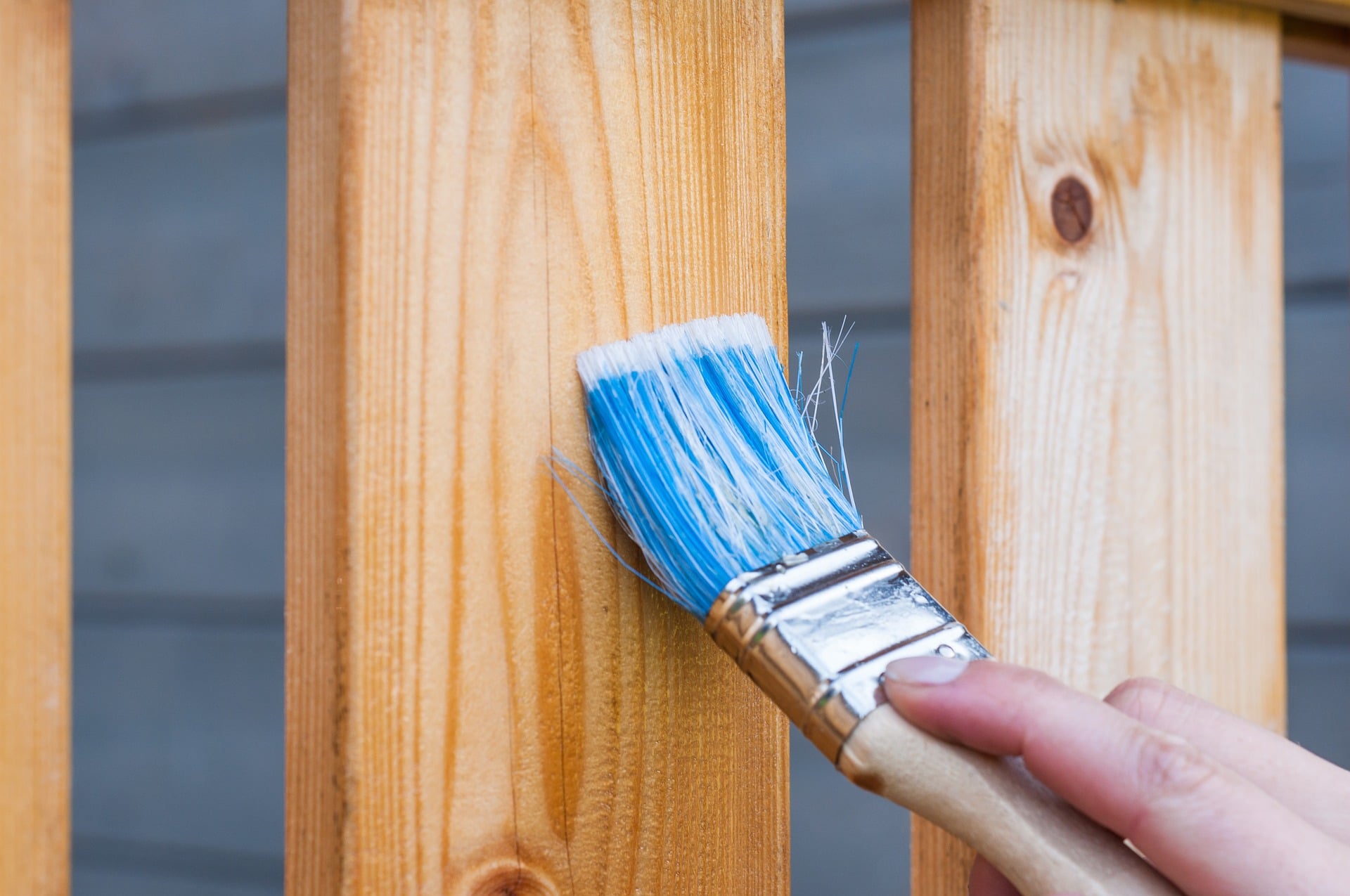Are you wondering how long it takes for teak oil to dry? It’s important to know the drying time to ensure your safety and the longevity of your teak wood furniture.
The drying time can vary depending on several factors, such as temperature and humidity levels. Typically, teak oil takes around 24 to 48 hours to dry completely. However, it’s crucial to test the dryness before using or exposing your furniture to moisture.
To accelerate the drying process, you can use fans or heaters, but be cautious not to overheat the wood. Remember to avoid common mistakes like applying too much oil, as it can extend the drying time.
Although the oil may feel dry to the touch, it’s important to allow it to cure fully for at least a week before regular use. By following these tips and maintaining the teak oil finish, you can ensure a beautiful and long-lasting shine for your teak wood furniture.
Quick Summary
- Teak oil takes around 24 to 48 hours to dry completely.
- Factors such as temperature and humidity levels can affect the drying time.
- Applying thin coats of teak oil allows for quicker absorption and drying.
- Adequate airflow and using a fan or hairdryer on low heat can help speed up the drying process.
Factors Affecting Drying Time
The drying time of teak oil can be influenced by various factors. If you want to ensure a quick and safe drying process, it’s important to understand these factors and the methods that can help speed up the drying time.
One of the main factors affecting drying time is the temperature. Teak oil tends to dry faster in warmer temperatures. So, if you’re working in a cold environment, it’s a good idea to heat up the area before applying the teak oil. This can be done using a space heater or by simply closing the windows and doors to trap the heat.
Another factor to consider is the humidity level. High levels of humidity can slow down the drying process of teak oil. To combat this, you can use a dehumidifier or air conditioner to reduce the moisture in the air. Additionally, make sure to apply the teak oil on a dry day when the humidity is low.
If you’re in a hurry and need the teak oil to dry quickly, there are a few methods that can help speed up the process. One method is to use a fan or a hairdryer on a low heat setting to blow air over the surface. This will help evaporate the moisture in the oil and accelerate the drying time. Another method is to apply thin coats of teak oil instead of one thick coat. This allows the oil to dry more quickly between coats.
By considering these factors and using the right methods, you can ensure a faster drying time for your teak oil. Remember to always prioritize safety and follow the instructions on the product label for best results.
Typical Drying Time
Teak oil typically takes about 24-48 hours to dry completely. During this time, the oil penetrates the wood, providing protection and enhancing its natural beauty. You’ll notice that the oil gradually becomes less tacky as it dries, indicating that it’s fully absorbed by the wood.
Average drying time for teak oil
On average, it only takes a few hours for teak oil to fully dry and bring out the beautiful golden hues of the wood. However, the drying time can vary depending on several factors that affect the oil’s penetration into the wood. To ensure faster drying, here are some tips you should keep in mind:
-
Apply thin coats: Thick layers of teak oil take longer to dry. Applying thin coats allows for quicker absorption and drying.
-
Temperature and humidity: Higher temperatures and lower humidity levels promote faster drying. Consider applying teak oil on warm and dry days for optimal results.
-
Ventilation: Adequate airflow helps in drying teak oil faster. Make sure the workspace is well-ventilated to facilitate quicker evaporation.
By following these tips, you can speed up the drying time of teak oil and achieve a beautiful, protected wood finish in no time.
| Factors Affecting Penetration | Tips for Faster Drying | Safety Precautions | ||||
|---|---|---|---|---|---|---|
| Thickness of coats | Apply thin coats | Use in a well-ventilated area | ||||
| Temperature | Choose warm days | Avoid open flames and sparks | ||||
| Humidity | Opt for low humidity | Keep away from children and pets | Drying time | Allow sufficient drying time | Store in a dry and cool place |
How long it takes for the oil to penetrate the wood
Imagine the feeling of watching the rich hues of the wood deepen as the oil effortlessly seeps into its fibers. When it comes to teak oil, the time it takes for the oil to penetrate the wood can vary depending on several factors.
One of the main factors affecting absorption is the condition of the wood. If the wood is dry and porous, it will absorb the oil more quickly, whereas if the wood is damp or has a sealed surface, it may take longer for the oil to penetrate.
Another important factor is the number of coats applied. Applying multiple coats of teak oil can enhance the depth of color and further protect the wood, but it may also extend the drying time.
So, if you want to achieve optimal results, consider these factors and take your time when applying teak oil to ensure the best absorption and long-lasting benefits for your wood.
Testing Dryness
After applying teak oil, you’ll want to eagerly observe the wood’s surface, waiting for any signs of dryness to appear. Testing the dryness of the wood is essential to ensure that it’s safe to use or handle.
There are a few different testing methods you can employ to check the effectiveness of the teak oil.
One simple way to test the dryness is by lightly touching the surface of the wood with the back of your hand. If it feels sticky or tacky, it’s not dry yet. However, if it feels smooth and dry to the touch, then you can proceed with confidence.
Another method is the paper towel test. Take a clean paper towel and gently press it against the wood. If it comes away clean, without any oil residue, then the wood is most likely dry.
Remember, it’s important to wait until the wood is completely dry before using or handling it. Rushing the process can lead to unwanted accidents or damage. So, exercise patience and allow the teak oil ample time to penetrate the wood and fully dry.
By following these testing methods and checking for the dryness of the wood, you can ensure that your project is safe and ready to use.
Accelerating the Drying Process
To expedite the drying process, you can employ certain techniques that’ll help accelerate the evaporation of moisture from the wood’s surface. When it comes to teak oil, there are several quick drying techniques you can use to ensure a faster drying time.
One method is to increase air circulation around the wood by using fans or opening windows and doors. This allows the moisture to escape more easily, speeding up the drying process.
Another technique is to use heat to accelerate evaporation. You can use a hairdryer or a heat gun on a low setting to gently warm the surface of the wood, helping the teak oil dry faster. However, it’s crucial to exercise caution when using heat, as excessive heat can damage the wood or even cause a fire. Always keep a safe distance and avoid applying direct heat for an extended period.
Additionally, you can apply thin coats of teak oil instead of thick ones. Thin coats dry faster because there’s less oil to evaporate.
By following these accelerating drying techniques, you can ensure that your teak oil dries quickly and effectively.
Avoiding Common Mistakes
Make sure you don’t make the common mistakes when applying teak oil to ensure a flawless finish. Here are three important tips to follow:
-
Test before you apply: Before diving headfirst into the application process, it’s crucial to test the teak oil on a small, inconspicuous area of your furniture. This will help you determine if the oil reacts well with the wood and if the color is to your liking. By testing, you can avoid any potential issues or surprises down the line.
-
Apply in thin, even coats: When applying teak oil, it’s important to remember that less is more. Applying thick coats of oil can lead to longer drying times and potential issues such as blotchiness or unevenness. Instead, apply thin and even coats, allowing each coat to dry completely before applying the next. This will ensure a smooth and professional-looking finish.
-
Troubleshoot as you go: If you encounter any issues during the application process, such as streaks or uneven color, don’t panic. Instead, troubleshoot the problem immediately. You can try using a clean cloth to buff out streaks or sanding down uneven areas and reapplying the oil. By addressing issues as they arise, you can achieve the desired result without compromising the safety or integrity of your furniture.
By following these testing techniques and troubleshooting issues as you go, you can ensure a successful teak oil application process and a beautifully finished piece of furniture.
Curing Time vs. Complete Drying
When it comes to teak oil, it’s important to understand the difference between curing and drying.
Curing refers to the process of the oil fully hardening and reaching its maximum level of protection, while drying simply means that the oil is no longer wet to the touch.
The time it takes for teak oil to fully cure can vary, but on average it may take anywhere from 24 to 48 hours.
Understanding the difference between curing and drying
Did you know that understanding the difference between curing and drying is the key to unlocking the secret of how long teak oil takes to dry?
When it comes to teak oil, curing refers to the initial stage where the oil begins to harden and form a protective layer on the surface. This process typically takes around 24 hours. However, complete drying, which refers to the time it takes for the oil to fully harden and become resistant to damage, can take up to 72 hours or longer, depending on various factors such as temperature and humidity.
Proper drying techniques are crucial to ensure the longevity and effectiveness of the teak oil. It’s important to allow sufficient time for the oil to fully dry before subjecting the treated surface to any kind of stress or moisture.
How long it takes for teak oil to fully cure
Understanding the process of curing teak oil is essential in order to appreciate the time it takes for the oil to fully harden and develop a protective layer. When it comes to teak oil, the curing time can vary depending on several factors.
One important factor is the temperature and humidity of the environment. Warmer temperatures and lower humidity levels can speed up the curing process, while colder temperatures and higher humidity levels can slow it down.
Another factor is the proper application technique. Applying teak oil in thin, even coats and allowing each coat to completely dry before applying the next can help ensure a faster and more thorough curing process. Remember, rushing the process can lead to an uneven finish, so it’s important to follow the recommended curing time for the specific teak oil product you’re using.
Properly cured teak oil will provide a durable and long-lasting protective layer for your teak furniture or decking.
Maintaining Teak Oil Finish
To maintain the teak oil finish on your furniture, it’s important to practice proper care and maintenance. This includes regularly cleaning the surface with a mild soap and water solution. Avoid using harsh cleaning agents or abrasive materials.
Additionally, applying additional coats of teak oil can help enhance the protection and prolong the life of the finish.
Proper care and maintenance to preserve the finish
Take good care of your teak furniture and give it the attention it deserves to ensure the finish lasts for years to come.
To preserve the finish, there are some important techniques you should follow. Firstly, protect your teak furniture against moisture. Avoid placing it directly on wet surfaces and use coasters or mats to prevent water damage. If your furniture does get wet, make sure to dry it thoroughly to avoid any water stains or mold growth.
Secondly, regularly clean your teak furniture using a mild soap and water solution. This will help remove any dirt or grime that can accumulate over time and potentially damage the finish.
Lastly, apply teak oil or a protective sealant every few months to maintain the natural beauty and shine of the wood.
By following these preservation techniques and protecting against moisture, you can ensure that your teak furniture stays looking its best for years to come.
Applying additional coats of teak oil for enhanced protection
Applying more coats of teak oil not only adds an extra layer of protection to your furniture, but it also enhances the natural beauty of the wood, making it even more appealing to the eye. When applying multiple coats, it is important to follow proper teak oil application techniques to ensure optimal results and safety. Here is a table that outlines the recommended steps:
| Step | Teak Oil Application Techniques |
|---|---|
| 1 | Clean the surface of the furniture thoroughly to remove any dirt or debris. |
| 2 | Apply a thin, even coat of teak oil using a brush or a cloth. |
| 3 | Allow the first coat to dry completely, which usually takes about 24 hours. |
| 4 | Lightly sand the surface with fine-grit sandpaper to smooth out any imperfections. |
| 5 | Apply additional coats of teak oil, following the same process as before. |
| 6 | Allow each coat to dry before applying the next one. |
By following these steps and applying multiple coats of teak oil, you can ensure the protection and longevity of your teak furniture while enhancing its natural beauty.
Frequently Asked Questions
Can teak oil be applied over a previous finish or varnish?
Yes, teak oil can be applied over a previous finish or varnish. Make sure to clean and sand the surface before applying the oil to ensure proper adhesion and a smooth, long-lasting finish.
Is it necessary to sand the wood before applying teak oil?
Yes, sanding is necessary before applying teak oil to ensure proper adhesion and a smooth finish. However, if you prefer an alternative method, you can use a liquid sandpaper product to prepare the surface.
Can teak oil be used on other types of wood besides teak?
Yes, teak oil can be used on other types of wood besides teak. It is commonly used for furniture restoration. Using teak oil on different wood species provides benefits such as protection and enhancing the natural beauty of the wood.
What is the recommended temperature and humidity level for optimal drying of teak oil?
For optimal drying of teak oil, it is recommended to work in an environment with a temperature between 70-80°F and a humidity level of around 50-60%. These conditions will ensure safe and efficient drying of the oil.
Can teak oil be applied indoors or is it strictly for outdoor use?
Teak oil can be applied indoors, but there are pros and cons. Pros include enhancing the wood’s natural beauty and providing protection. However, cons may include strong fumes and longer drying time, so ensure proper ventilation and allow sufficient time for drying.
Conclusion
So, now you know how long teak oil takes to dry. It typically takes around 24 to 48 hours for teak oil to fully dry, but factors like humidity, temperature, and the number of coats applied can affect the drying time.
To test if it’s dry, simply touch the surface lightly and see if it feels tacky. If it does, it needs more time to dry. To speed up the process, you can use fans or heaters, but avoid common mistakes like applying too much oil or not allowing enough drying time between coats.
Once the oil is completely dry, it’s important to maintain the teak oil finish regularly to keep it looking beautiful.








